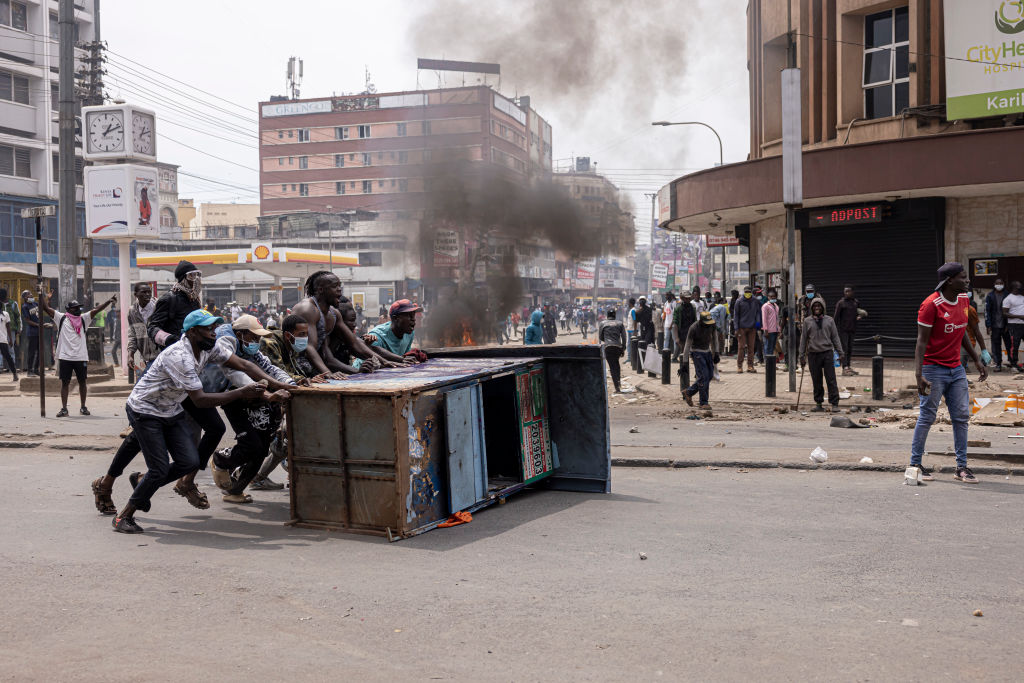ADF STAFF
Chinese lending to African countries slowed significantly in the years immediately before and after the COVID-19 pandemic. But although many countries still struggle under the weight of enormous debt, China appears poised to launch new projects in Africa with a focus on mineral extraction.
Developing countries owe China an estimated $1.1 trillion, and more than 80% of China’s loans are to countries experiencing financial distress, according to AidData, a research lab at William & Mary. Despite this, China rarely agrees to loan forgiveness or principle reduction, preferring to negotiate longer repayment plans on a case-by-case basis.
“For the last decade or so China was the world’s largest official creditor, and now we’re at this pivot point where it’s really about (China) as the world’s largest official debt collector,” AidData executive director Brad Parks told CNN.
Chinese lending to Africa peaked in 2016 at $28.4 billion before dropping down below $1 billion in 2022. Last year saw new Chinese investments in Africa rise by 114% and construction increase by 47%, according to Australia’s Griffith University. But these projects look different. After the pandemic era, China has moved away from sovereign loans and plans to focus on public-private partnerships. In these projects, a Chinese developer builds infrastructure such as a highway, bridge or port and then operates it for a fee.
“Policymakers in Beijing have … been pushing Chinese companies to take equity stakes and operate infrastructure they build for foreign governments,” Reuters reported. “The aim, China analysts say, is to help companies win higher-value contracts and, by giving them skin in the game, ensure the projects are economically viable.”
Also, despite promises of two-way trade, African exporters have little access to Chinese markets for their goods. Most of China’s imports from the continent are oil, gas and minerals.
“The result is a more one-sided relationship than China says it wants,” Reuters reported. “One that is dominated by imports of Africa’s raw materials and that some analysts argue contains echoes of colonial-era Europe’s economic relations with the continent.”
With the annual Forum on China-Africa Cooperation (FOCAC) set to take place in September, China is expected to announce new projects in Africa. But its lending practices are coming under scrutiny. Several countries that have taken on debt have found themselves forced to make drastic cuts to domestic programs or raise taxes in order to repay the loans. Kenya, for example, spends about 60% of its revenue on debt payments, with about one-third of that money going to pay the interest on loans, Vox reported.
China is Kenya’s largest bilateral lender with more than $6 billion in loans, including $1.2 billion due by June 2025.
This summer, as Kenya has faced huge street protests over a proposed tax increase and austerity measures, China repeatedly refused to offer any leniency on its debt.
“For reasons that we don’t understand the China Ex-Im Bank seems really adamant not to give Kenya any leeway, to give them a certain breathing room,” Christian-Geraud Neema Byamungu said on the China in Africa Podcast. “It’s not going to cost China a leg to reschedule it for five years, it’s not going to cost them, but somehow they just don’t.”
As the Kenyan shilling has depreciated in recent years, the cost of servicing the debt has increased. In the first quarter of 2023, the cost to service the debt increased by $160 million, due to the shilling’s lost value. In the face of protests, Kenyan President William Ruto has backtracked on plans for tax increases, but that likely will require cuts to government services.
Analysts believe China could help Kenya avoid the direst cuts, but so far it has refused to do so.
“Reschedule the debt, put it out 20 years, and Ruto has asked for this repeatedly and been denied at every turn,” Eric Olander of the China Global South Project said on the China in Africa Podcast. “Think about a billion dollars leaving between now and next June, how badly that could be used for other things.”

